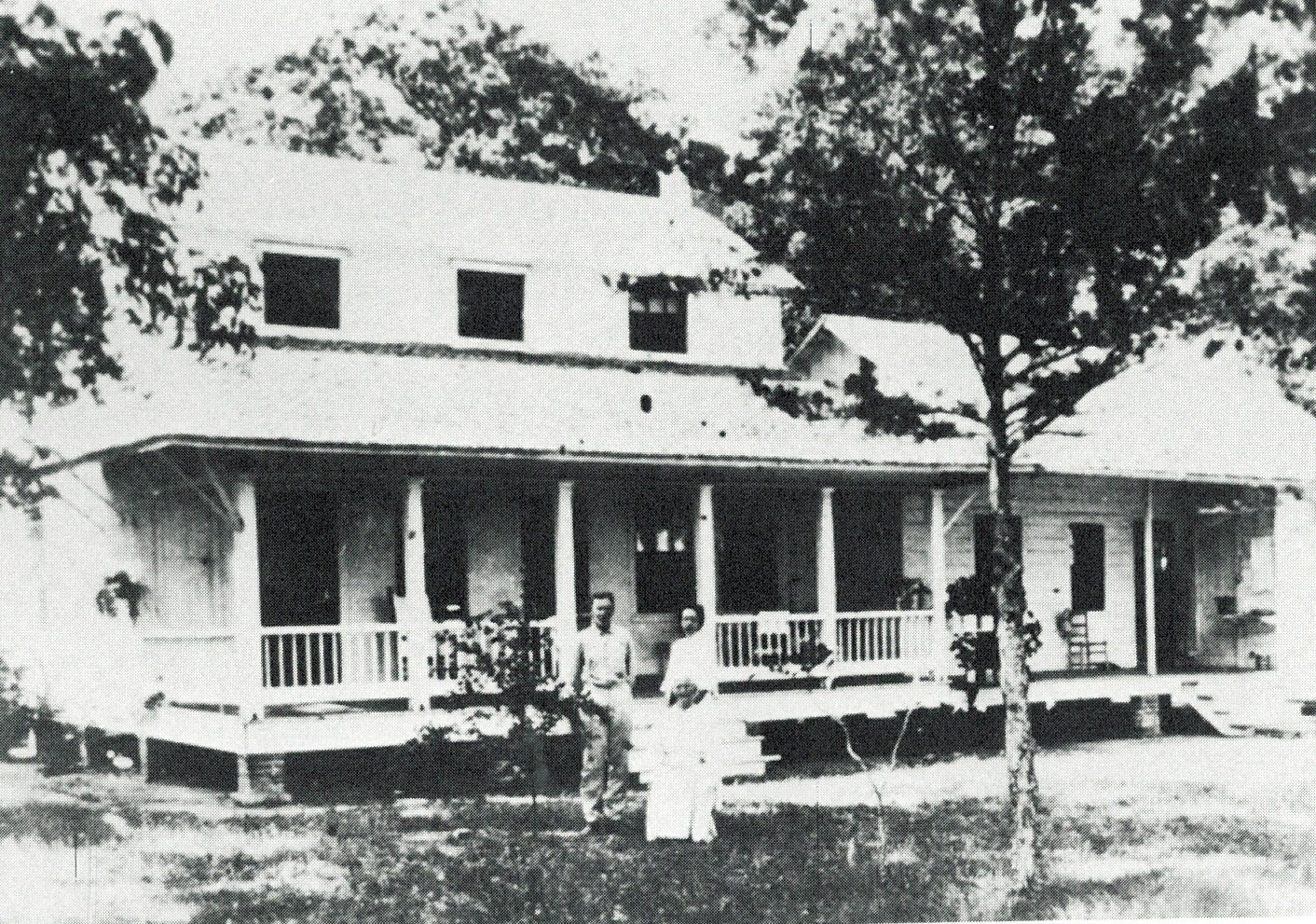JOE AND SERAPHINE PIVOTO
by Judith Linsley
When Texas entered the United States in 1845 as the 28th state, the annexation brought a flood of new immigrants across the Sabine River into Texas. Many came from Louisiana, in search of land on which to raise cattle and rice.
Two such transplants were Joe and Sara Pivoto, both of varied French extraction. Joe's father, Michel, was the grandson of an immigrant from France, while his mother, Apollonie Broussard, was the granddaughter of the Acadian resistance leader Joseph "Beausoleil" Broussard, born in Nova Scotia. Sara's mother, Juliane D'Artes (the spelling varies), was born in Spanish Louisiana, while her father was Pierre DuBois, born in Bretagne, France.
Joe entered into the Texas cattle business in Jefferson County with a man named Taylor Cade. In those days Texas cattle were driven to the New Orleans market along the Opelousas (or Atascosito) Trail, which ran along the Texas coast all the way from Refugio to New Orleans. Family tradition says that Sara was living in Franklin, which lay along the Opelousas Trail, when she and Joe met and married in 1836. They moved to St. Martinville, where their four children were born.
At some point Joe moved his family to Jefferson County, on land where the Opelousas Trail touched the southern edge of the Big Thicket and where there were both prairies for grazing cattle and timber to build a house. The home he built (now in the town of Nome) was one day's journey from Beaumont to the east and from Tom Devers' place (now the town of Devers) to the west. It was the frontier equivalent of a hotel, offering food and shelter to cattle drovers, travelers, and even stagecoach passengers.
The house was completed around 1852, a two-story structure of hand-cut and hand-sawn cypress (an incredibly durable wood). An outside staircase led to a guest room upstairs, providing privacy. (The Louisiana equivalent was called a garconnier, or "boys' room," so young bachelors could come in late without waking the family.)
Over the years the Pivotos hosted many travelers, generating stories for later generations. One night a man stopped for supper, then continued on his way; two days later his riderless horse showed up, with vicious claw marks on its back. Another time two courteous, friendly overnighters turned out to be Frank and Jesse James.
The broad gallery across the front of the Pivoto house was ideal for dancing, eating, and visiting. Guests would come for several days, the women sleeping upstairs and the men on the porch or ground.
Joe Pivoto died in 1876, but Sara, who was his senior by some 14 years, lived on until 1901, dying at the age of 104, according to family tradition. The house went to their son Jules Mosceau and eventually passed into the ownership of Joe and Sara's great-great grandson, who restored it in 1981.
The house still stands, the family cemetery behind it. It bears a historical marker and will hopefully endure for many years, an appropriate testimony to one family's history in early Texas.
Judith W. Linsley, "If walls could talk, Pivoto house would dominate the conversation." Beaumont Journal, June 12-18, 1997. John H. Walker, "A House and Its People: The Story of the Joseph Pivoto House." The Texas Gulf Historical and Biographical Record, 23 (November, 1987). Search.Ancestry.com (Joseph Pivoto and Seraphine Anna Dubois ancestors).

Pivoto house